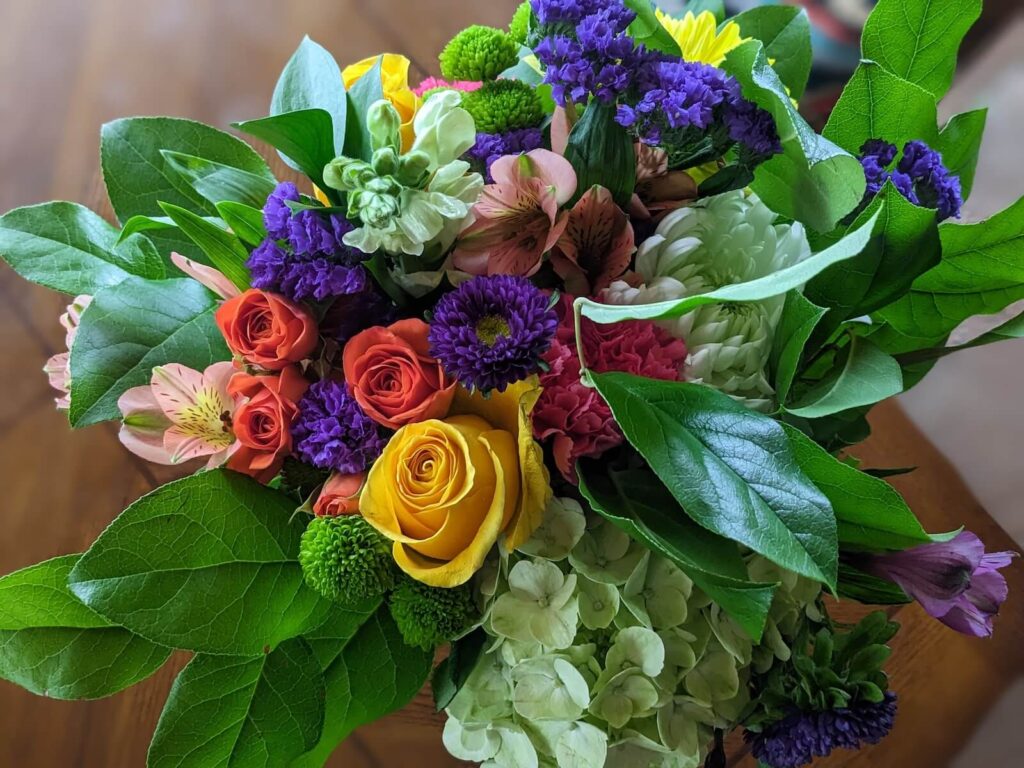
Expert Tips to Ensure Freshness in Flower Delivery across Sydney

Flowers have always been a symbol of beauty, love, and celebration. Whether it’s a birthday, anniversary, or special occasion, sending flowers is a thoughtful gesture that can brighten someone’s day. However, ensuring the freshness of the flowers during delivery is crucial to making a lasting impression.
In the bustling city of Sydney, where flower delivery services are abundant, it’s important to know how to maintain the quality and freshness of the blooms. Let’s delve into the significance of freshness in Sydney flower delivery and explore some expert tips to ensure your flowers arrive in perfect condition.
Understanding the Importance of Freshness in Flower Delivery
Have you ever received a bouquet of wilting flowers? The disappointment is palpable. Freshness plays a vital role in the overall quality of the flowers. When flowers are freshly cut, they exhibit vibrant colors, strong stems, and a pleasant fragrance. On the other hand, flowers that have been sitting for too long lose their luster and wilt. The freshness of flowers not only affects their appearance but also influences their longevity.
Imagine receiving a bouquet of roses, their petals vibrant and velvety, their fragrance filling the room. You can’t help but smile as you arrange them in a vase, knowing they will bring joy for days to come. These fresh flowers were carefully selected and cut at the peak of their beauty, ensuring that every bloom is at its best.
But what happens when flowers are not fresh? When they have been sitting for days, their once vibrant colors start to fade, their stems weaken, and their fragrance diminishes. Instead of a joyful gift, you are left with a reminder of wilted beauty. The importance of freshness in flower delivery cannot be overstated. Learn more about the hidden benefits of choosing local Sydney flower delivery services.
The Impact of Freshness on Flower Quality
The quality of flowers is directly correlated with their freshness. Freshly cut flowers have a higher chance of surviving longer compared to older blooms. This is because fresh flowers have intact and hydrated cells, enabling them to absorb water and nutrients more efficiently. As you admire a bouquet of fresh flowers, you can be confident that they will stay beautiful for days, if not weeks, to come.
When flowers are cut, their stems are like straws, allowing them to drink up water and nutrients from the vase. Fresh flowers have strong, healthy stems that can efficiently transport these essential resources to every petal and leaf. This hydration keeps the flowers looking vibrant and prevents them from wilting prematurely.
Furthermore, fresh flowers are less likely to develop diseases or pest infestations. Just like any living organism, flowers are susceptible to various ailments. However, when flowers are freshly cut, their natural defenses are at their strongest. They are less likely to succumb to diseases or become a breeding ground for pests, ensuring that they stay vibrant and healthy for an extended period.

Why Freshness Matters in Flower Delivery
When sending flowers, it’s crucial to consider the time it takes for them to reach their destination. Freshness becomes even more vital when dealing with long-distance deliveries. The longer the flowers are in transit, the greater the risk of them deteriorating in quality. By ensuring the freshness of the flowers at the time of delivery, you increase the chances of your loved ones receiving a stunning bouquet that will last well beyond their special day.
Imagine your loved one opening a box to find a bouquet of fresh flowers, their colors vibrant and their fragrance filling the room. They can’t help but feel special and loved as they arrange the flowers in a vase, knowing that you took the time and effort to ensure their freshness. Whether it’s a birthday, anniversary, or a simple gesture of love, fresh flowers delivered with care make all the difference.
Long-distance flower delivery can be a logistical challenge. The flowers need to be carefully packaged and protected to withstand the journey. But it’s not just about the physical protection; it’s also about preserving their freshness. Florists who specialize in long-distance flower delivery understand the importance of maintaining the flowers’ quality throughout the journey. They use innovative techniques and packaging materials to ensure that the flowers arrive at their destination as fresh as the moment they were cut.
By prioritizing freshness in flower delivery, you are ensuring that your loved ones receive a gift that will bring them joy for days to come. Fresh flowers have a way of brightening up any space, lifting spirits, and creating lasting memories. So the next time you send flowers, remember the importance of freshness and the impact it can have on the overall experience.
Key Factors Affecting Flower Freshness during Delivery
Several factors can impact the freshness of flowers during the delivery process. By understanding and addressing these factors, you can significantly improve the chances of your flowers arriving in pristine condition. Let’s explore two key factors:
Temperature and Humidity Considerations
Flowers are sensitive to temperature fluctuations. Extreme heat can cause them to wilt, while cold temperatures can lead to damage or frostbite. It is crucial to ensure that flowers are transported in a controlled environment where the temperature is carefully regulated. Florists who prioritize flower freshness during delivery will have specialized vehicles equipped with temperature-controlled compartments. These compartments maintain an optimal temperature range, ensuring that the flowers remain fresh and vibrant throughout the journey.
Similarly, humidity levels can affect the longevity of flowers. High humidity can accelerate the growth of bacteria, fungi, and mold, leading to a rapid deterioration of the blooms. On the other hand, low humidity can cause dehydration and wilted petals. To combat these issues, reputable florists employ advanced humidity control systems within their delivery vehicles. These systems maintain the ideal humidity levels, creating an environment that promotes flower freshness and prevents the growth of harmful microorganisms.
By choosing a florist who takes temperature and humidity control seriously during transportation, you can have peace of mind knowing that your flowers will arrive in optimal condition, ready to be enjoyed for an extended period.
Packaging and Handling Techniques
The packaging and handling of flowers significantly impact their freshness. Flowers should be carefully packaged to protect them from damage during transit. Reputable florists use specially designed packaging materials that provide cushioning and support to the delicate blooms. These materials help prevent stems from bending and petals from being crushed, ensuring that the flowers maintain their shape and beauty.
Additionally, proper handling techniques play a crucial role in maintaining the integrity of the flowers. Florists who prioritize flower freshness train their staff to handle the bouquets with care and precision. They avoid rough movements or excessive shaking that could potentially damage the delicate petals or disrupt the arrangement. By entrusting your flower delivery to a florist who prioritizes proper packaging and handling, you increase the chances of your bouquet arriving in impeccable condition, as if it were just picked from a garden.
Furthermore, some florists go the extra mile by incorporating innovative packaging techniques. For example, they may use water-filled vials attached to the stems to ensure continuous hydration during transit. This innovative approach helps to keep the flowers fresh and vibrant, even during longer journeys.
When selecting a florist for your flower delivery, it is crucial to inquire about their packaging and handling practices. By choosing a florist who pays meticulous attention to these details, you can be confident that your flowers will be handled with utmost care and arrive in perfect condition.
Expert Tips for Maintaining Flower Freshness
Now that you understand the importance of flower freshness and the factors that can affect it during delivery, let’s explore some expert tips for ensuring your flowers remain fresh:
Choosing the Right Flowers for Delivery
Not all flowers have the same resilience to long-distance delivery. Some flowers, such as roses and orchids, are known for their longevity and ability to withstand transportation stress. When selecting flowers for delivery, consider opting for varieties that are known to be more robust. By choosing resilient flowers, you enhance the chances of your bouquet arriving fresh and undamaged.
Proper Hydration Techniques for Fresh Flowers
Proper hydration is crucial to keep flowers fresh during delivery. Before packaging the bouquet, the florist should ensure that each stem is correctly hydrated. Ideally, the stems should be cut at an angle to maximize water absorption. Additionally, including a packet of flower food in the package can help nourish the flowers during transportation. By prioritizing proper hydration techniques, your flowers will remain bright and beautiful upon arrival.
Overcoming Delivery Challenges to Ensure Flower Freshness
Even with careful preparation and attention to detail, there are inherent challenges to overcome when it comes to flower delivery. However, by implementing effective strategies, you can increase the likelihood of successful delivery and maintain flower freshness:
Timing and Scheduling Strategies
Timing is crucial when it comes to flower delivery. Ensuring that the flowers are picked, arranged, and dispatched promptly significantly improves their chances of arriving fresh. Working with a florist who adheres to strict timelines and follows efficient scheduling strategies can help minimize delays and ensure your flowers reach their destination at the peak of freshness.
Dealing with Long-Distance Deliveries
Long-distance flower delivery poses unique challenges due to extended travel times. To overcome these challenges, it’s essential to select a florist experienced in handling long-distance deliveries. They will employ specialized techniques, such as using moisture-retaining materials and temperature-controlled transportation, to safeguard the freshness of the flowers throughout the journey.
The Role of Technology in Ensuring Flower Freshness
As technology continues to evolve, so do the methods used to ensure flower freshness during delivery. Let’s explore some technological innovations that have revolutionized the industry:
Innovations in Flower Preservation
Advancements in flower preservation techniques have allowed for longer-lasting blooms. Flower preservatives, humidity-controlled storage facilities, and modified atmosphere packaging are just a few innovations that help maintain the freshness and appearance of flowers. By harnessing technology, florists can extend the lifespan of flowers, ensuring their beauty is preserved for an extended period.
The Future of Fresh Flower Delivery in Sydney
The future of flower delivery in Sydney is undoubtedly bright. With advancements in transportation, packaging, and preservation techniques, the industry is poised to enhance the freshness and quality of blooms. From faster delivery times to improved flower care strategies, customers can expect an even more delightful flower delivery experience in the years to come.
In conclusion, when it comes to flower delivery across Sydney, freshness is of paramount importance. By understanding the significance of freshness, addressing key factors affecting flower quality during delivery, and implementing expert tips, you can ensure your flowers remain vibrant and fragrant throughout the journey. Trusting a reputable florist who prioritizes proper packaging, handling, and transportation techniques is essential in achieving a successful flower delivery experience. As technology continues to advance, we can look forward to even more innovative methods that will revolutionize flower preservation and delivery, further enhancing the freshness and beauty of each bouquet that graces our loved ones’ doorsteps.
